![]() Key Takeaway
Key Takeaway
Vigilance is a static ability that lets creatures that possess it attack without getting tapped.
The best way to use Vigilance is to boost the power and toughness of weaker creatures that have it as an ability or to give Vigilance to powerful creatures that don’t.
The best way to counter Vigilance is with a deterrent—like Deathtouch—or with effects that target all enemy creatures.
If you want to attack as much as possible with your creatures, Vigilance in Magic: The Gathering is an ability you should use. It’s particularly useful in decks that aim to balance offense and defense. With the right strategy, your front line will never fall!
Table Of Contents
What Is Vigilance?
Vigilance is a static ability that lets creatures that possess it attack without getting tapped. Although it’s one of the simpler keywords in MTG, it has great potential. Since Vigilance is a static ability, it’s always active and doesn’t have an activation cost.
The color that has the most creatures with Vigilance is white. Following this, green and blue creatures are the next most common possessors of Vigilance. Creatures that have this ability (and no others) usually have low power and toughness—as well as a low mana cost.
This makes many Vigilance creatures ideal for casting at the beginning of a game to prevent early attacks from lesser threats. In addition, they’re also great for making early-game attacks of your own due to such creatures being able to block on the turn following their attack.
An Example of How Vigilance Works
Let’s say you have an Alpine Watchdog under your control and all your opponent has under their control is a Packsong Pup. Usually, when you see a lone Packsong Pup under your opponent’s control, it’s safe to assume they’re planning to cast a wolf or werewolf creature soon.
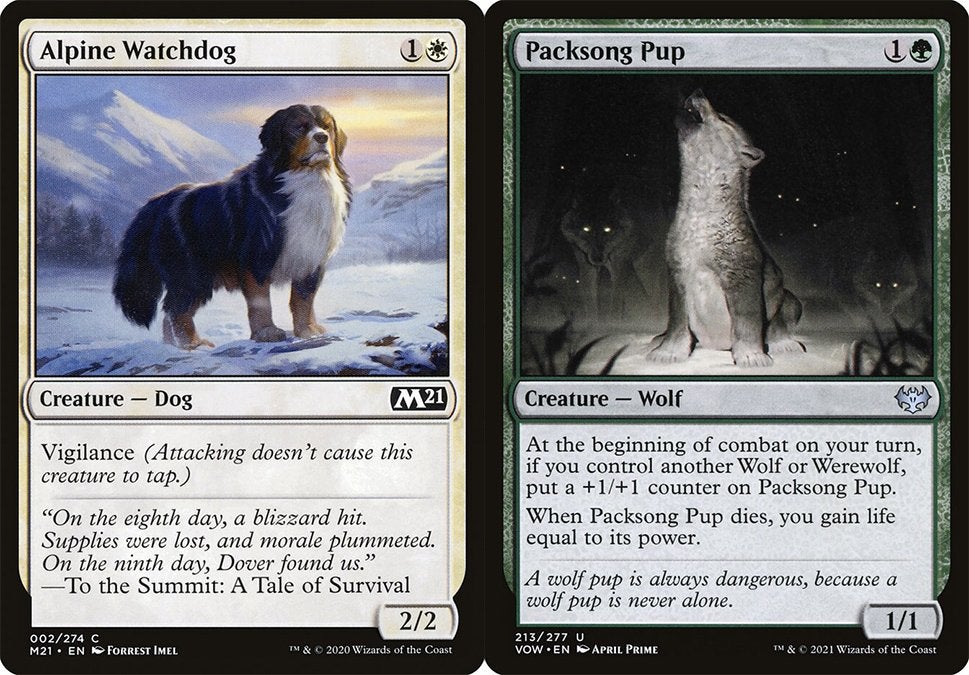
Now would be a good time to attack with Alpine Watchdog. Your opponent isn’t likely to block with Packsong Pup because they probably don’t want it to get destroyed. As such, with Alpine Watchdog’s power of 2, you’re almost guaranteed to take 2 life points away from your opponent in this situation.
Since Alpine Watchdog does not get tapped (thanks to Vigilance), you’ll be able to block with it next turn. Therefore, if your opponent indeed casts a wolf or werewolf creature next turn (and boosts Packsong Pup in the process), they won’t be able to attack with their precious pup without risking its destruction.
How to Use Vigilance
The best way to use Vigilance in Magic: The Gathering is to boost the power and toughness of weaker creatures that have it as an ability or to give Vigilance to powerful creatures that don’t. In fact, you can do both fairly frequently in the same deck. One of the main strategies of many white decks is to strengthen weak creatures—so Vigilance has natural synergy here.
We should also mention that there are lots of self-sufficient high-cost creatures with Vigilance. Legendary creatures like Akroma, Angel of Wrath, are prime examples of this. The catch is that such creatures have high mana costs, which results in them only being useful near the later parts of a game.
Power Up Weak Vigilance Creatures
There are tons of ways to give your creatures +1/+1 counters with white cards. One example that you can use near the beginning of many games is the planeswalker Ajani, Caller of the Pride.
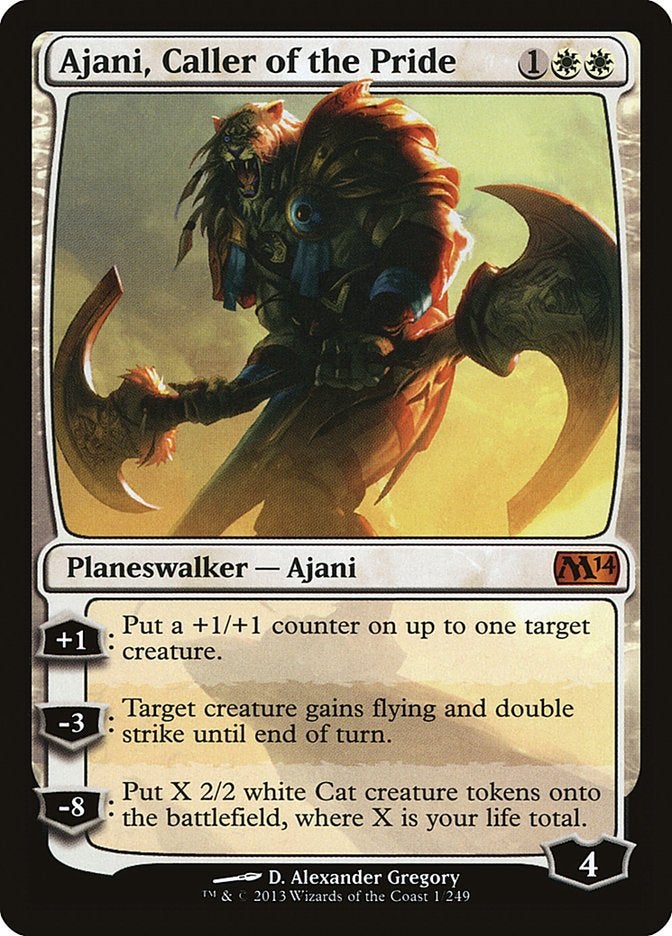
The first of Ajani, Caller of the Pride’s loyalty abilities lets you put a +1/+1 counter on any creature—such as one with Vigilance. When you do so, Ajani, Caller of the Pride also gains 1 Loyalty. This, in turn, brings you closer to using this planeswalker’s other loyalty abilities.
Since this tactic doesn’t require any mana (outside of casting Ajani, Caller of the Pride), you can repeatedly use it; once every turn.
If you want a more direct method of giving your creatures +1/+1 counters, you can use sorcery and instant cards to do so as well. A great example of this is the sorcery Basri’s Solidarity.
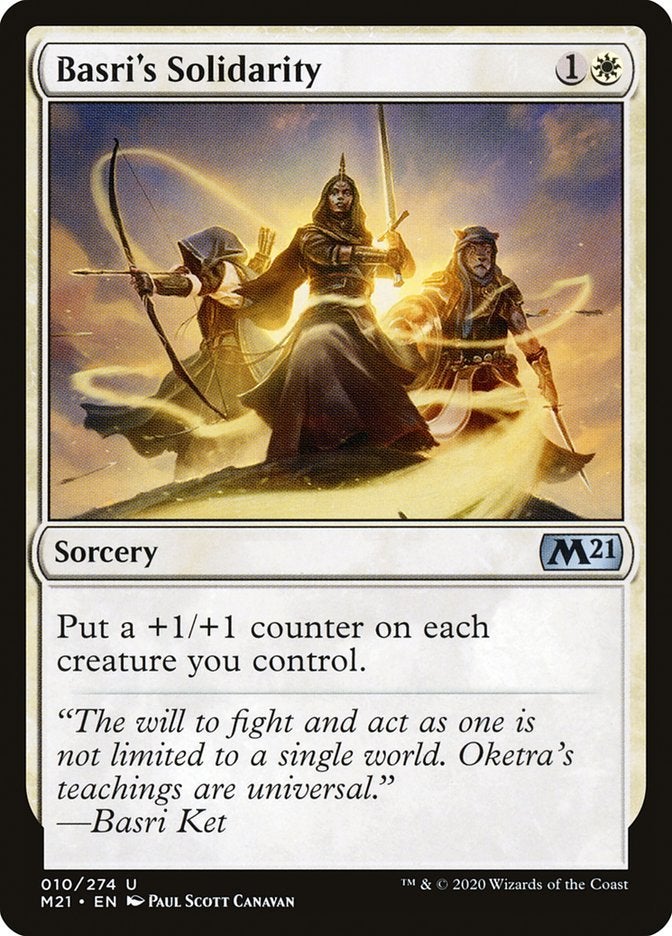
For only 2 mana (1 colorless and 1 white), you can place a +1/+1 counter on each of your creatures. Stack your deck with a bunch of cards like those mentioned above for many counter applications.
Although there are a lot of white cards that grant +1/+1 counters, there aren’t many that put bigger counters on targets. That’s more of a green tactic—which pairs nicely with white if you’re considering a Vigilance-heavy two-color deck.
Give Strong Creatures Vigilance
You can also use the inverse of the above-mentioned tactic. There are quite a few white enchantment cards that give your creatures Vigilance. A reliable staple of such strategies is Always Watching.
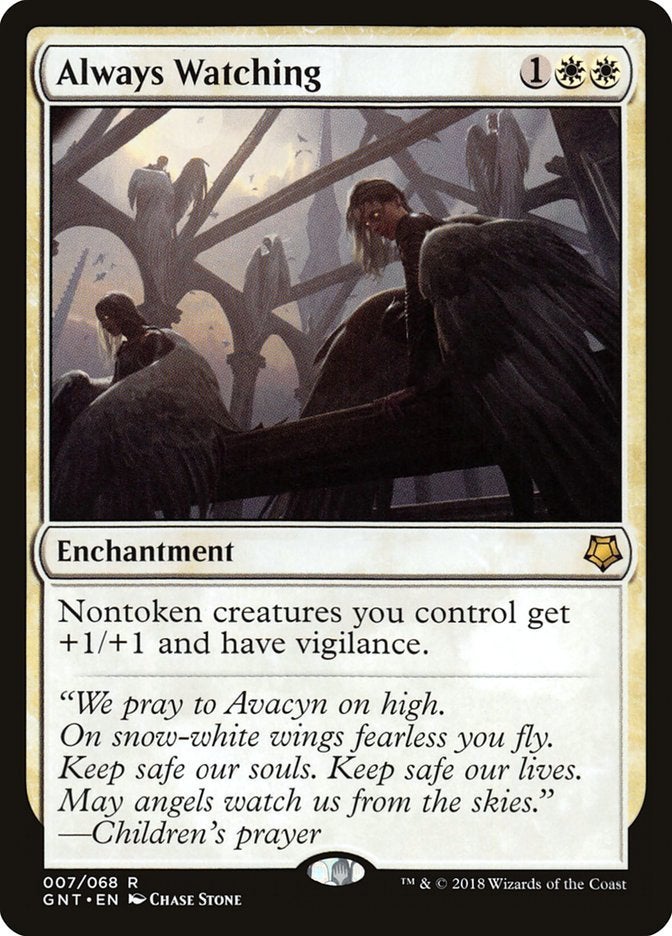
This card only costs 3 mana to cast (1 colorless and 2 white) but boosts all of your nontoken creatures as well as grants them Vigilance. If, for instance, you have a 5/5 creature under your control, you can play the above enchantment and use your bulky beast (now 6/6) as an excellent attacker and blocker. Otherwise, you’d have to choose when and how to attack and defend with it. Vigilance means you don’t have to make such decisions as often.
How to Counter Vigilance
The best way to counter Vigilance in Magic: The Gathering is with a deterrent. Force your opponent into a position where it’s unwise for them to attack.
Vigilance is an ability that can appear on many cards via being naturally possessed by creatures or granted through the use of enchantments, instants, and sorceries. As such, it’s not efficient to try and take care of every Vigilance creature individually. Try to use effects that target all creatures or all opponent creatures.
Deter Foes With Deathtouch
It doesn’t matter if a creature remains untapped during an attack if it gets destroyed. Casting a single creature with the Deathtouch ability can be an excellent way to passively prevent your opponent from attacking with their Vigilance creatures. This is especially effective if your Deathtouch creature also has the Flying ability—like Baleful Strix.
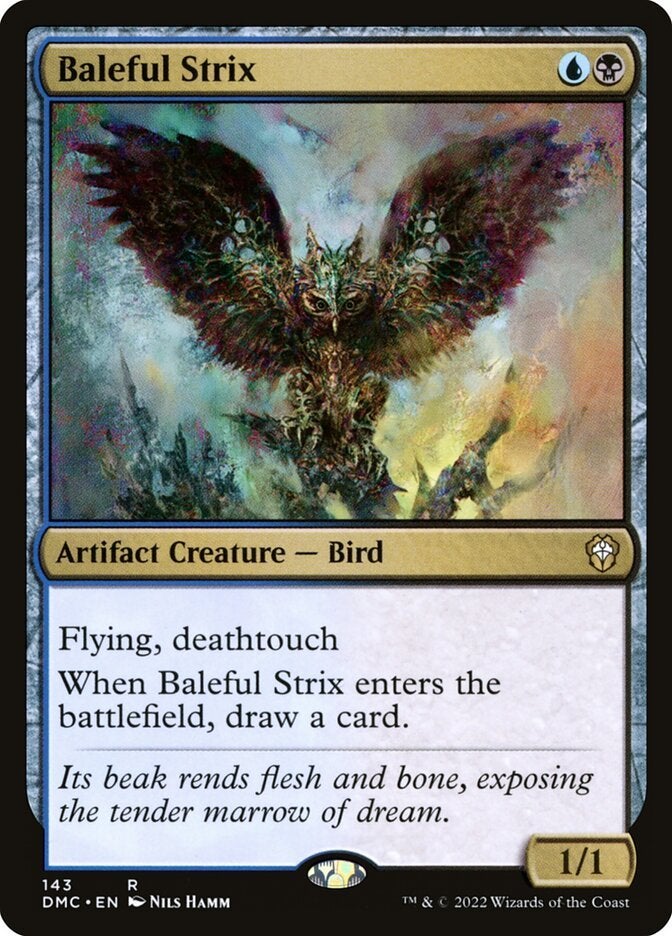
Under many circumstances, your opponent won’t dare attack with any of their most valuable creatures if you have Deathtouch permanents like Baleful Strix on the battlefield.
Alternatively, you can Flash cast a creature with Deathtouch as a sinister surprise. Doing so as your opponent declares an attack with one of their best creatures is a solid strategy for eliminating a big threat. One creature that lets you pull off tricks like this is Ambush Viper.
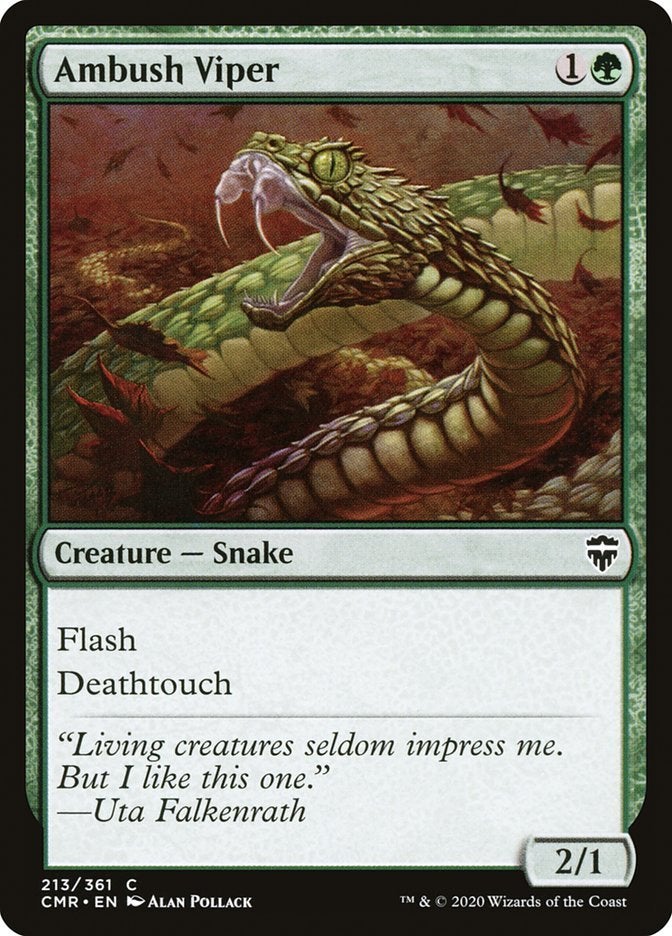
You cast Ambush Viper while your opponent is attacking—thanks to Flash (lets the possessor of this keyword be cast as if it’s an instant). Once it’s on the battlefield, you can use it to block the attacking creature. Since this is after your opponent has declared their attack, they can’t call it off. The result is one destroyed attacker full of viper venom.
Destroy All Threats
White decks that prominently feature this ability usually have lots of weak creatures. You can use a card that targets all creatures for destruction to wipe out all threats on the battlefield. To avoid taking out too many of your own creatures, try to use a card that has an addendum to such an effect—like the sorcery Austere Command.
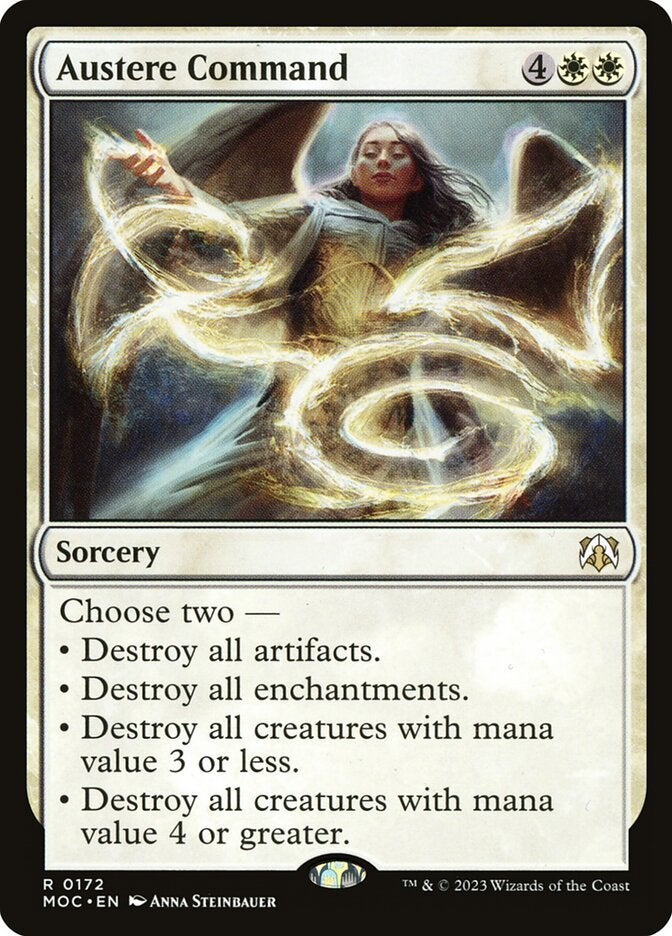
By choosing the “Destroy all creatures with mana value 3 or less” (and another effect since you must pick two), you can decimate weak enemy ranks. Or, if your opponent has a strong creature in play that has a high mana cost, you can use the “Destroy all creatures with mana value 4 or greater” effect.
Alone, Vigilance in Magic: The Gathering won’t be enough to achieve victory. However, when used in combination with other effects and abilities, it can lead to great advantages. This is especially true in the early parts of a game. On top of that, Vigilance has great synergy with attack-oriented abilities such as Lifelink and Trample. Use combos like these to press attack while never letting your guard down.


